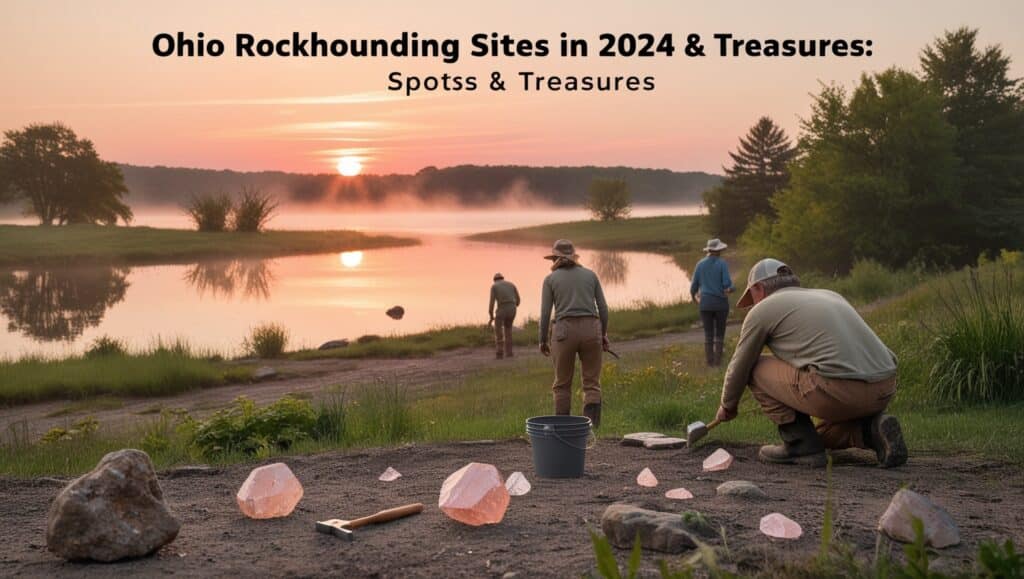
Ohio, affectionately known as the Buckeye State, is a treasure trove for rockhounding enthusiasts. With its diverse geological history spanning hundreds of millions of years, Ohio offers a fascinating array of rocks, minerals, and fossils waiting to be discovered. From the ancient quartz deposits of Flint Ridge to the fossil-rich limestone beds along Lake Erie, Ohio’s landscape tells a compelling story of the Earth’s dynamic past.
In 2024, Ohio rockhounding continues to captivate both novice collectors and seasoned geologists alike.
This comprehensive guide will take you on an in-depth journey through the state’s most promising sites, uncover the geological treasures you can find, and provide essential tips for a successful rockhounding adventure.
Top Ohio Rockhounding Sites for 2024

Caesar Creek State Park: A Fossil Hunter’s Paradise
Caesar Creek State Park, located in Warren County, stands out as a premier destination for fossils in Ohio. This park is renowned for its exposed Ordovician-age rocks, which are teeming with well-preserved marine fossils. Here’s what makes Caesar Creek special:
- Fossil diversity: The park is home to an incredible array of marine fossils, including brachiopods, trilobites, crinoids, bryozoans, and even occasional vertebrate remains.
- Emergency spillway: This area is particularly rich in fossils due to ongoing erosion caused by water overflow from the lake. The constant erosion exposes new fossils regularly, making each visit potentially rewarding.
- Permit system: A free permit is required for fossil collecting, ensuring responsible practices and helping park officials track the impact of collecting activities.
- Guided programs: The park offers educational programs and guided fossil hunts, perfect for beginners or those wanting to learn more about the area’s paleontology.
“Caesar Creek is like a time capsule from 450 million years ago when Ohio was covered by a warm, shallow sea. The diversity and preservation of fossils here are truly remarkable.” – Dr. Mark Peters, Ohio State University Geologist
you can also read this Malachite Value Guide: Tips for a Worthy Investment
Flint Ridge State Memorial: Ancient Quarries of Native American Heritage
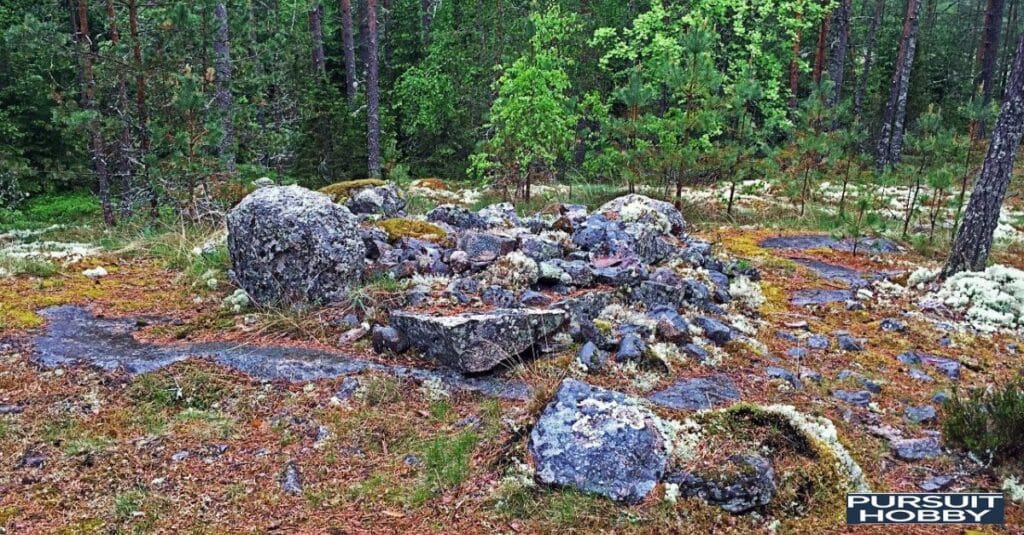
Flint Ridge, stretching for nearly eight miles in Licking and Muskingum counties, is a mecca for those seeking high-quality flint. This site offers:
- Colorful flint varieties: The area is famous for its Flint Ridge flint, known for its vibrant hues ranging from deep reds and purples to blues and greens.
- Historical significance: Native Americans quarried this site for thousands of years, using the flint for tools and trade.
- Flint Ridge Museum: Visitors can learn about the geological processes that formed the flint and the cultural importance of this material to Native American societies.
- Collecting opportunities: While collecting is restricted in most areas, there are designated spots where visitors can search for small flint samples.
Hocking Hills State Park: Nature’s Rockhounding Classroom
The stunning rock formations of Hocking Hills offer a unique opportunity to observe geological processes firsthand. Key features include:
- Blackhand Sandstone: Massive cliffs and caves showcasing intricate erosion patterns, providing a visual lesson in geological weathering.
- Quartz pebbles: Found embedded in conglomerate rocks, these pebbles offer insight into ancient river systems that once flowed through the area.
- Scenic trails: Old Man’s Cave, Ash Cave, and Cedar Falls not only provide breathtaking views but also excellent opportunities to study rock strata and formation processes.
- Seasonal waterfalls: These features demonstrate the ongoing process of erosion and landscape formation.
Lake Erie Shoreline: Beachcombing for Geological Treasures
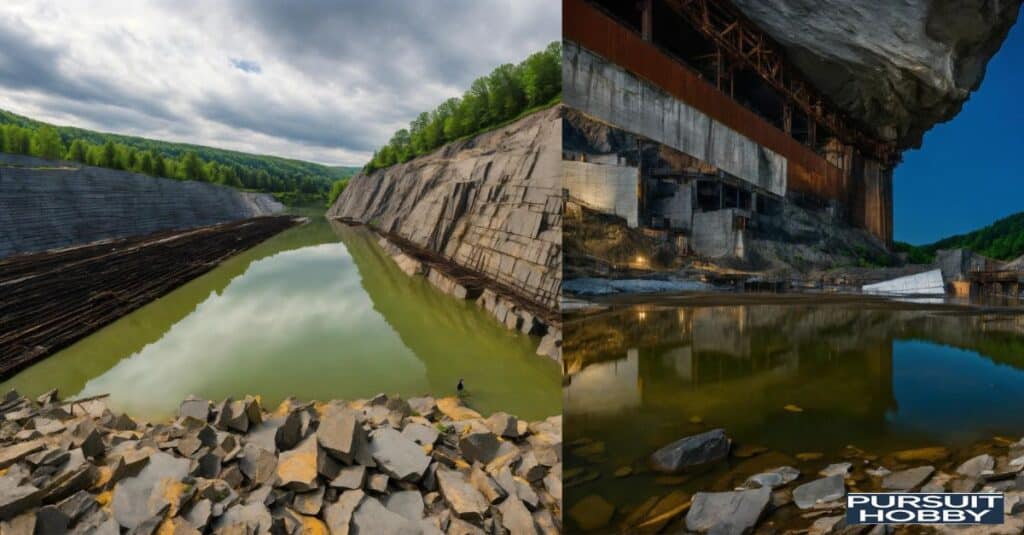
The shores of Lake Erie offer a different kind of rockhounding experience, perfect for those who enjoy beachcombing. Here’s what you can discover:
- Beach glass: Smoothed by the lake’s waves over decades, these colorful fragments of glass are popular finds along the shore.
- Glacial erratics: Rocks transported by ancient glaciers from as far as Canada, offering a diverse selection of rock types not native to Ohio.
- Fossil-rich limestone: Eroded from underwater deposits, these rocks often contain well-preserved marine fossils.
- Shale and sandstone: Showcasing the sedimentary nature of Ohio’s bedrock.
you can also read this Marble Value: Worth & Buying Tips
Cincinnati Arch: A Window into Ancient Marine Life
The Cincinnati Arch region in southwestern Ohio is renowned for its Ordovician fossils. This geological feature has exposed rocks that are approximately 450 million years old, making it a hotspot for fossil enthusiasts. Key sites include:
- Cesar Creek State Park: (As mentioned earlier)
- Trammel Fossil Park: Located in Sharonville, this park is open to the public for fossil collecting and offers educational programs.
- Hueston Woods State Park: Known for its geodes and fossils, particularly in the creek beds and exposed rock faces.
Ohio’s Geological Bounty: What You Can Find
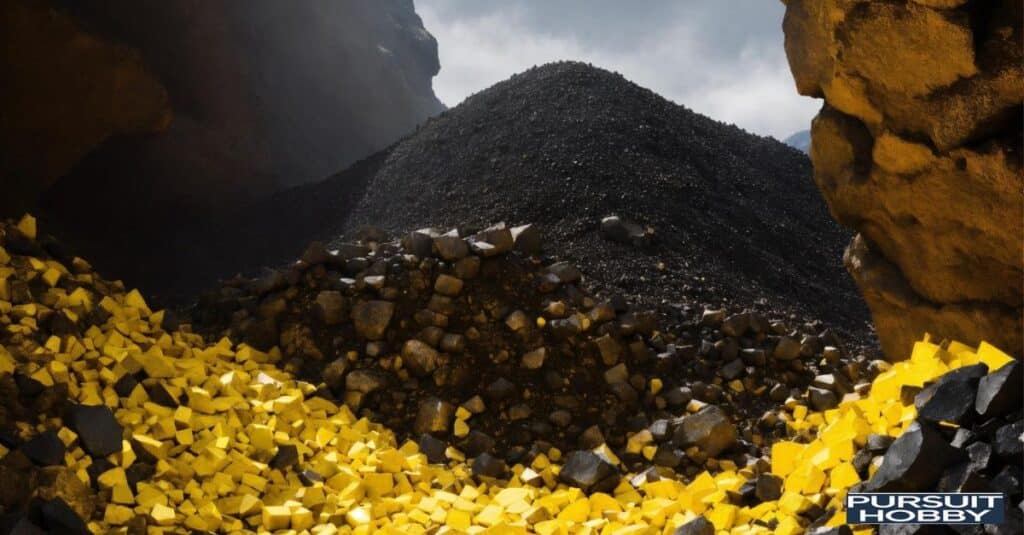
Gemstones in Ohio
While Ohio isn’t known for precious gemstones, it offers several semi-precious varieties that are prized by collectors:
| Gemstone | Location | Characteristics |
|---|---|---|
| Flint | Flint Ridge | Colorful, fine-grained quartz; ranges from deep reds to blues and greens |
| Quartz crystals | Various locations | Clear to cloudy, hexagonal crystals; often found in geodes |
| Celestine | Put-in-Bay, Lake Erie islands | Blue to white crystals, often associated with limestone deposits |
| Ohio Agate | Southern Ohio | Banded agate with unique patterns, often found in creek beds |
Sedimentary Rocks in Ohio
Ohio’s bedrock is primarily composed of sedimentary rocks, offering a wide variety for collectors:
- Limestone: Rich in fossils, found throughout the state. Particularly abundant in western Ohio.
- Shale: Often containing plant fossils and sometimes pyrite. The Ohio Shale formation is known for its dark color and organic content.
- Sandstone: Ranging from fine to coarse-grained varieties. The Berea Sandstone is a notable formation used extensively in construction.
- Dolostone: Similar to limestone but containing magnesium, often found in northwestern Ohio.
Metamorphic Rocks in Ohio
Metamorphic rocks are less common in Ohio but can still be found:
- Slate: Occurring in small quantities in the eastern part of the state, particularly in areas near the Appalachian Mountains.
- Quartzite: Found as glacial erratics in northern Ohio, these rocks originated from areas further north.
- Gneiss: Another type of rock found as glacial erratics, recognizable by its banded appearance.
Igneous Rocks in Ohio
While not formed in Ohio, igneous rocks can be found as glacial erratics:
- Granite: Transported from Canada during the last ice age, these rocks can be found in northern Ohio.
- Basalt: Also found as glacial erratics in northern Ohio, often recognizable by their dark color and fine-grained texture.
- Diabase: An intrusive igneous rock sometimes found as dikes cutting through older sedimentary rocks.
Fossils: Ohio’s Prehistoric Treasures
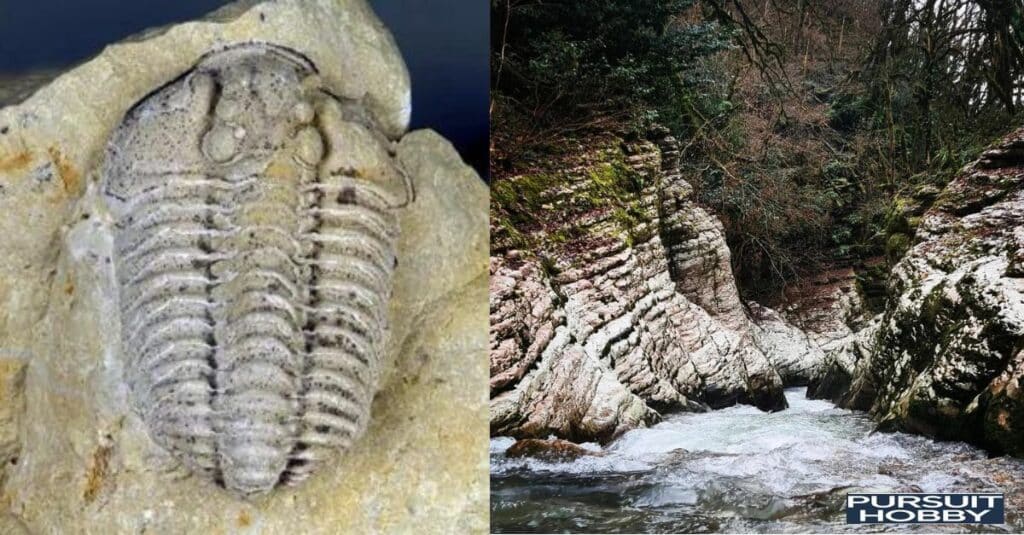
Ohio is a fossil hunter’s dream, with abundant remains of ancient marine life:
- Trilobite fossils: Especially common in the southwestern part of the state. Species like Flexicalymene and Isotelus are frequently found.
- Brachiopods: Found in limestone and shale deposits throughout Ohio. Genera like Platystrophia and Rafinesquina are common.
- Crinoids: Often found as stem segments or “Indian beads.” Complete crinoid fossils are rare but highly prized.
- Plant fossils: Prevalent in coal-bearing regions of eastern Ohio, including fern impressions and carbonized plant remains.
- Corals: Both rugose (horn corals) and tabulate corals can be found in Devonian and Silurian rocks.
- Bryozoans: These colonial organisms are often found as lace-like impressions in limestone.
you can read also How To Spot Petrified Wood (Real or Fake) Identification
Gold Panning in Ohio: Fact vs. Fiction
While Ohio isn’t known for significant gold deposits, recreational gold panning in Ohio can yield small finds:
- Historical occurrences: Small amounts of placer gold have been reported in glacial deposits, particularly in southern Ohio.
- Best locations: The Bellville and Butler rivers in southern Ohio have yielded small gold flakes. Other potential sites include streams in Clermont, Brown, and Adams counties.
- Realistic expectations: Gold finds are typically small and rare; it’s more about the experience than striking it rich. Most finds are fine gold dust or tiny flakes.
- Techniques: Panning and sluicing are the most common methods used. Some enthusiasts also use metal detectors to locate potential gold-bearing areas.
“While you’re not likely to fund your retirement with Ohio gold, the thrill of finding even a few flakes can be incredibly rewarding.” – John Anderson, Ohio Gold Prospectors Association
Ohio Rockhounding Laws & Regulations
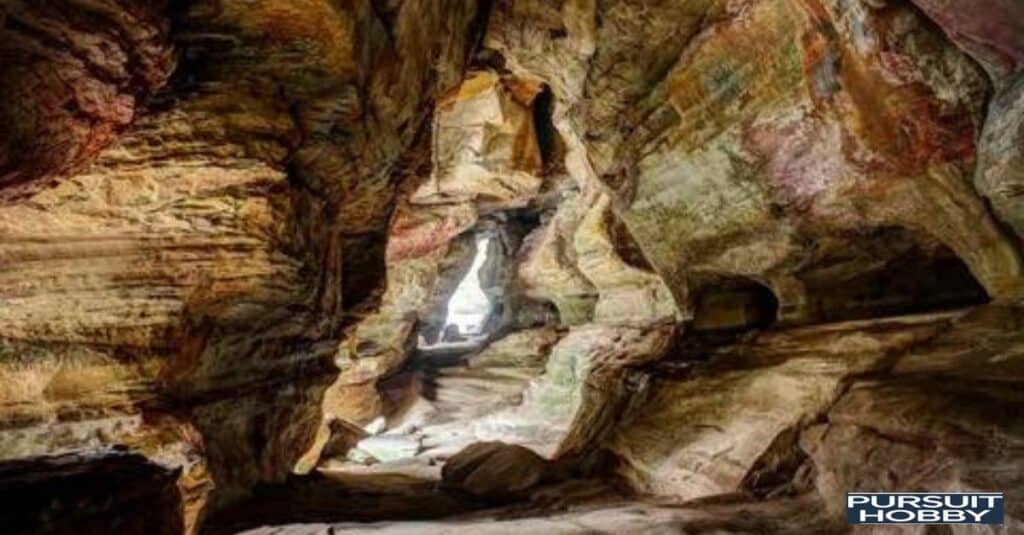
Before you embark on your rockhounding adventure, it’s crucial to understand the legal landscape:
State Park Rules
- Collecting is generally prohibited in state parks without a permit.
- Caesar Creek State Park offers a permit system for fossil collecting in designated areas. Permits are free but must be obtained in person at the park office.
- Some state parks allow limited surface collecting of common rocks and minerals, but it’s essential to check specific park rules before collecting.
Private Property Considerations
- Always obtain explicit permission before rockhounding on private land.
- Many quarries and mines are off-limits due to safety concerns and private ownership.
- Some landowners may allow collecting for a fee or through organized group trips.
Fossil Collecting Regulations
- Vertebrate fossils are protected and should not be collected without proper permits, typically only issued for scientific research.
- Invertebrate fossils can often be collected for personal use in designated areas, but commercial collection usually requires special permissions.
- It’s illegal to collect any artifacts or fossils from Native American lands without proper authorization.
Ethical Rockhounding Practices
- Follow the “Leave No Trace” principles to minimize impact on the environment.
- Take only what you need and can reasonably use. Avoid over-collecting.
- Avoid disturbing wildlife or damaging plant life during your activities.
- Fill in any holes you dig and don’t undermine rock faces or structures.
Rockhounding Tips for Ohio Enthusiasts
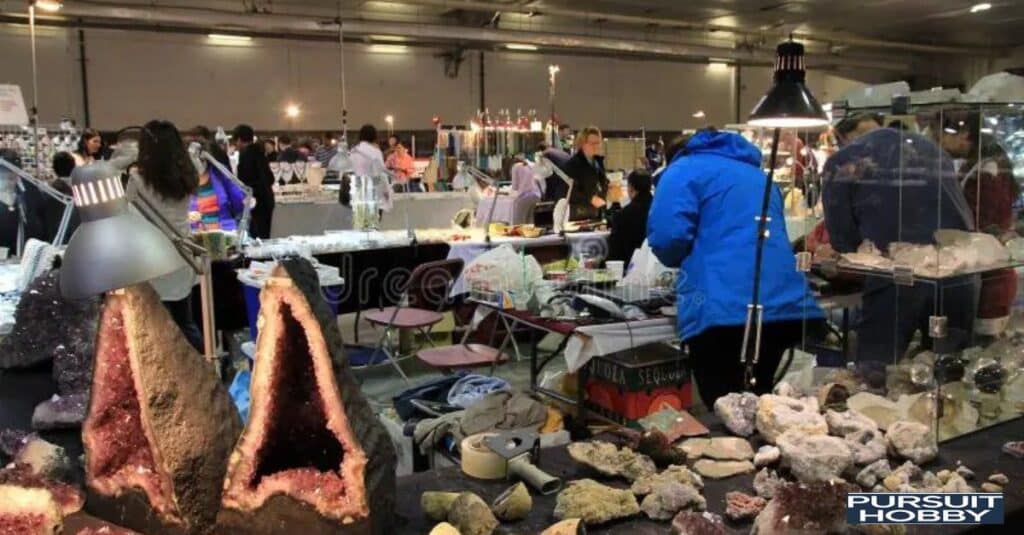
Best Seasons for Ohio Rockhounding
- Spring: After winter thaws expose new material. Be prepared for muddy conditions.
- Fall: Lower water levels in creeks and rivers reveal more rocks and fossils. Colors can be vibrant, making it easier to spot interesting specimens.
- Summer: Ideal for beach combing along Lake Erie, but be prepared for heat and sun exposure.
- Winter: While challenging, frozen ground can sometimes reveal specimens not visible in other seasons.
Identifying Common Ohio Rocks and Minerals
- Use a field guide specific to Ohio geology. The Ohio Department of Natural Resources offers excellent resources.
- Carry a small magnifying glass (10x to 20x) for closer examination of mineral structures and fossil details.
- Learn the basic properties of rocks and minerals:
- Hardness (using the Mohs scale)
- Luster (metallic, vitreous, earthy, etc.)
- Cleavage and fracture patterns
- Color and streak
- Practice with known samples before heading into the field.
Techniques for Fossil Extraction and Preservation
- Use gentle tools like soft brushes and dental picks for delicate fossils.
- For fossils in soft matrix, carefully remove surrounding material with chisels or awls.
- Wrap specimens in soft material (tissue paper, bubble wrap) to prevent damage during transport.
- Document the location and geological context of your finds. Take photos in situ if possible.
- For delicate or significant finds, consider leaving them in place and reporting to local experts.
Local Rockhounding Groups and Clubs
Joining a local group can enhance your rockhounding experience:
- Ohio Geological Society: Offers field trips and educational programs.
- Central Ohio Mineral, Fossil, and Gem Society: Hosts shows and workshops.
- Cincinnati Mineral Society: Provides resources for collectors in southwest Ohio.
- Cleveland Geological Society: Organizes lectures and field trips in northern Ohio.
These groups often have experienced members who can help with identification and provide valuable local knowledge.
Essential Gear for Ohio Rockhounding
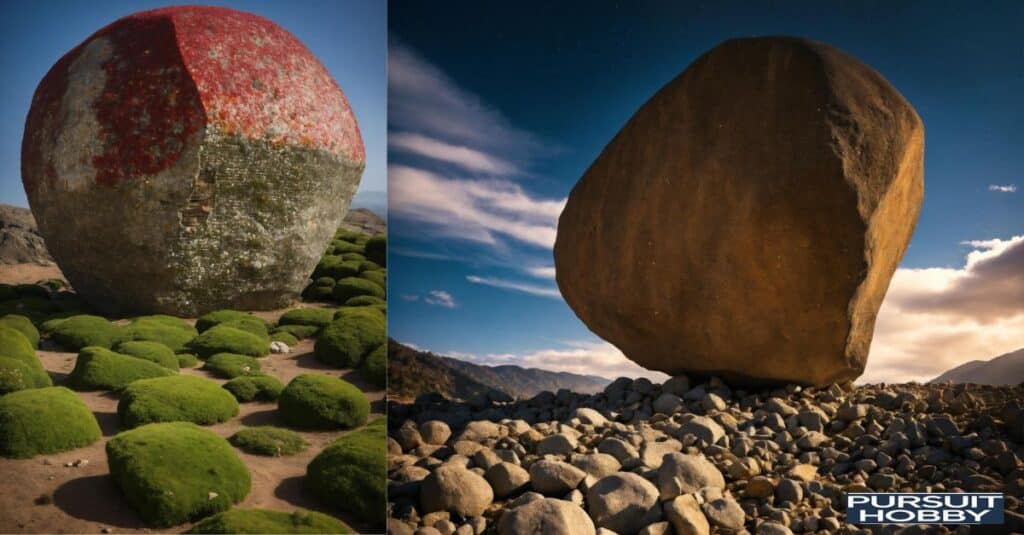
To make the most of your rockhounding trips, ensure you have the right equipment:
Basic Tools
- Rock hammer: For breaking and trimming rocks.
- Chisels (various sizes): For more precise extraction.
- Safety goggles: To protect your eyes from flying rock chips.
- Work gloves: To protect your hands and improve grip.
- Sturdy boots: With good ankle support and traction.
- Knee pads: For comfort during extended kneeling.
Documentation Tools
- Field notebook: Waterproof is best for recording finds and locations.
- Camera or smartphone: For documenting specimens and sites.
- GPS device or app: To record exact locations of finds.
- Small ruler or scale: For size reference in photographs.
Carrying Equipment
- Backpack: To carry your gear and finds.
- Sturdy collection bags or buckets: Cloth bags for delicate specimens, buckets for larger rocks.
- Wrapping materials: Newspaper, tissue paper, and small boxes for fragile specimens.
- First-aid kit: For minor injuries.
- Water and snacks: Stay hydrated and energized.
Safety First: Rockhounding Precautions
Weather Considerations in Ohio
- Check local weather forecasts before your trip.
- Be prepared for sudden changes, especially near Lake Erie.
- In summer, bring sun protection and plenty of water.
- In winter, dress in layers and be aware of hypothermia risks.
Terrain Awareness
- Watch for loose rocks on slopes and cliffs.
- Be cautious around water edges, especially after rain when banks may be unstable.
- Use a walking stick for balance on uneven terrain.
- Be aware of your surroundings and potential hazards like abandoned mines or quarries.
Wildlife and Plant Hazards
- Learn to identify poison ivy, poison sumac, and other irritating plants.
- Be aware of ticks and use appropriate repellents. Check yourself thoroughly after each outing.
- Watch for snakes, particularly in rocky areas on warm days.
- Respect wildlife and maintain a safe distance.
Beyond Collecting: Ohio’s Geological Education Resources
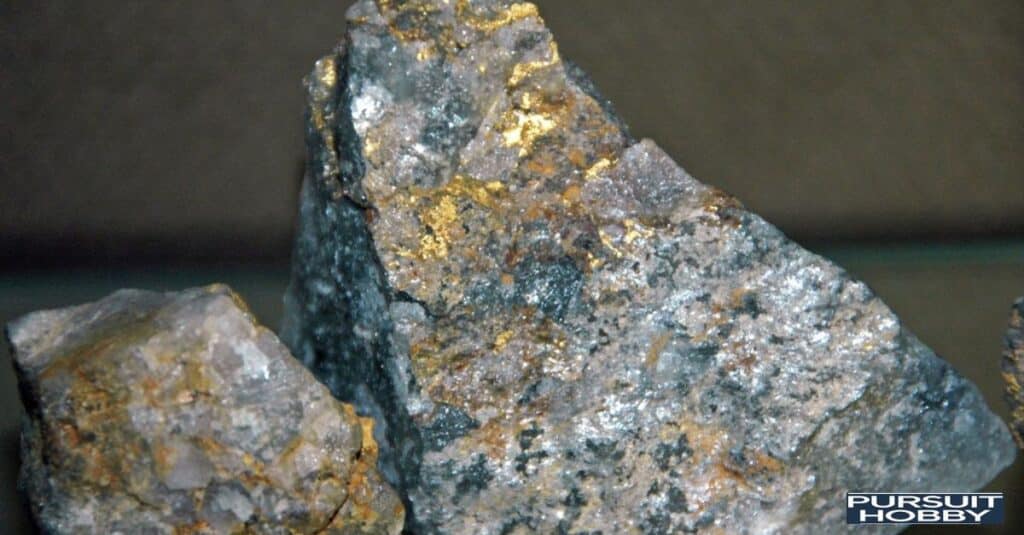
Ohio Geological Survey Programs
The Ohio Geological Survey offers various educational resources:
- Field trips: Guided excursions to significant geological sites.
- Online databases: Detailed information on Ohio’s geological features and mineral resources.
- Publications: Maps, guidebooks, and reports on Ohio’s geology.
- Educational outreach: Programs for schools and community groups.
University Geology Departments
Many Ohio universities offer public events and lectures on geology:
- Ohio State University: Hosts the annual “Geology Field Experience” open to the public.
- University of Cincinnati: Offers public lectures on various geological topics.
- Miami University: Conducts geological walking tours of the campus and surrounding area.
- Kent State University: Provides access to its mineral and fossil collections.
Museums with Rock and Mineral Collections
- Cleveland Museum of Natural History: Features an extensive collection of minerals and fossils from Ohio and around the world.
- Orton Geological Museum at Ohio State University: Showcases a wide range of geological specimens, including a full-size cast of a T. rex skeleton.
- Cincinnati Museum Center: Houses a significant collection of local Ordovician fossils.
- Boonshoft Museum of Discovery in Dayton: Offers hands-on geology exhibits and a collection of rocks and minerals.
Sustainable Rockhounding: Preserving Ohio’s Geological Heritage

As rockhounding enthusiasts, it’s our responsibility to preserve Ohio’s geological wonders for future generations:
- Practice “Take only photographs, leave only footprints” in sensitive areas.
- Report significant finds to local universities or the Ohio Geological Survey.
- Educate others about the importance of geological conservation.
- Support local geological societies and their conservation efforts.
- Participate in citizen science projects that contribute to geological research.
Ohio Rockhounding Map: Planning Your Adventure
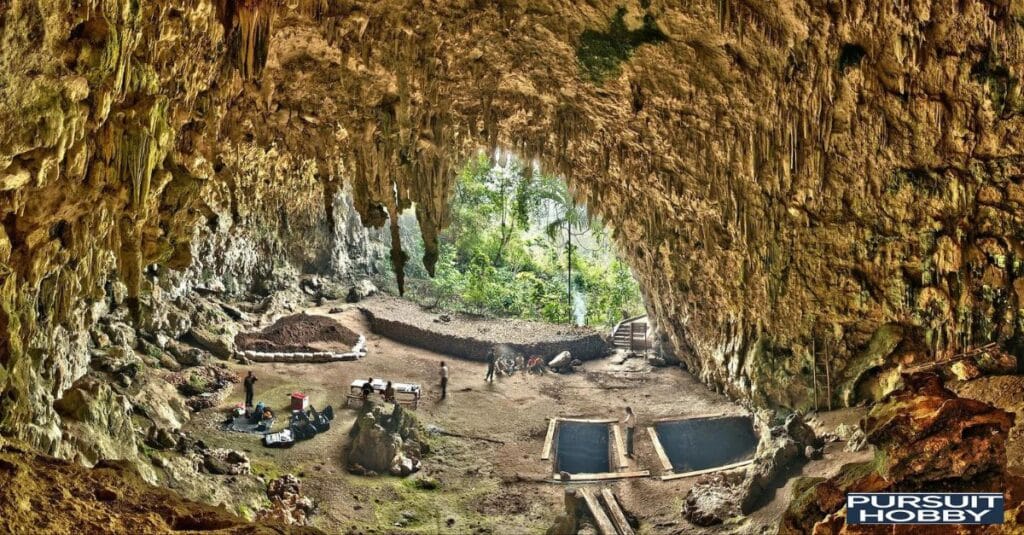
To help plan your rockhounding trips, consider using online resources such as:
- Interactive maps from the Ohio Geological Survey, showing bedrock geology and fossil sites.
- US Rockhounding Map, which includes Ohio sites and is regularly updated by the rockhounding community.
- Local rockhounding club websites for up-to-date information on collecting sites and field trips.
- USGS topographic maps for detailed terrain information.
When using these resources, always cross-reference with current regulations and obtain necessary permissions before visiting sites.
Conclusion: The Future of Rockhounding in Ohio
As we look to the future, Ohio rockhounding continues to evolve:
- New sites are being discovered through erosion, construction, and scientific research.
- Citizen science projects are engaging hobbyists in geological research, contributing valuable data to our understanding of Ohio’s geology.
- Educational programs are inspiring the next generation of Ohio rockhounds, fostering a love for Earth sciences.
- Advances in technology, such as portable XRF analyzers, are making field identification of minerals more accessible.
Ohio’s geological treasures offer endless opportunities for discovery and learning. Whether you’re searching for quartz in Ohio, hunting for trilobite fossils in Ohio, or simply enjoying the state’s diverse geological landscapes, rockhounding in the Buckeye State is an adventure that connects us to the Earth’s fascinating history.
Remember to rockhound responsibly, respect the environment, and share your passion for Ohio’s geological wonders with others. By doing so, we ensure that future generations can continue to explore and appreciate the rich geological heritage of Ohio.
As you embark on your rockhounding adventures across Ohio, from the ancient flint quarries of Flint Ridge to the fossil-rich shores of Lake Erie, keep in mind that each rock, mineral, and fossil you encounter tells a part of Ohio’s incredible geological story. Happy hunting, and may your collection grow with each exciting find!

Aley Noraa is an experienced blogger with a passion for sharing insightful and engaging content. With years of writing under her belt, Aley combines her expertise in various topics with a unique voice that resonates with readers. Her dedication to delivering valuable information and inspiring stories makes her a standout author on Pursuit Hobby. When she’s not writing, Aley enjoys exploring new hobbies and connecting with her audience.

